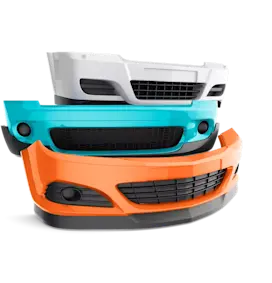Big Data and You: Why Does Industry 4.0 Matter and How Can It Benefit Your Operations
Big Data and You: Why Does Industry 4.0 Matter and How Can It Benefit Your Operations
Big Data and You: Why Does Industry 4.0 Matter and How Can It Benefit Your Operations
14 Nov 2018
Aptean Staff Writer
Because of Industry 4.0, supply chain managers are able to increase efficiency, reduce cost and expand manufacturing operations. While a few skeptics remain, they risk being left behind to debate – leaving early adopters to capitalize on technological growth. Consider how Industry 4.0 solutions can have a direct impact on your operations:
The Connection to Growth
The growth of IoT-enabled technology, fueled by Industry 4.0, now allows supply chain managers to have greater visibility into their operations. For example, supply chain managers can use IoT-connected drones that monitor warehouse inventory for better production schedule planning.
In addition, IoT connectivity allows supply chain managers to monitor asset life cycles. From production, to shipment, to delivery, IoT-connected devices are able to track each phase, allowing supply chain managers to predict and confirm asset location. It also allows managers to respond in real time to any deviations from delivery schedules.
IoT also enables the use of wearables such as voice solution headsets and glove barcode scanners, which increase mobility and efficiency within the warehouse. Using wearables eliminates the need for long hours spent reporting at a desk or work station by enabling real-time reporting from the warehouse floor. These wearables process data, then transmit this information to an IoT-connected system that allows supply chain managers to quickly develop actionable insights.
Forecast for the Future
Predictive analytics provides supply chain managers the ability to analyze processes and forecast outcomes for smarter decision making. A common use of predictive analytics is prescriptive maintenance, often driven by small-scale computing technology like condition-based sensors. Rather than waiting until a malfunction occurs or relying on inaccurate maintenance schedules, managers can use these condition-based sensors to receive performance alerts about equipment and machines before there is a major malfunction. This allows managers to be proactively adjust their processes when necessary.
The use of predictive analytics also helps managers identify fluctuations in demand. Data from predictive analytics can alert managers when to increase orders because of peak season and decrease orders during slower seasons, avoiding backlog and reducing wasted resources.
AI Can Do the Heavy Lifting
Artificial intelligence (AI) can be implemented with autonomous machines that can improve efficiency and reduce costs. AI-enabled machines and devices can assist with product picking and shipping, as well as operate self-driving forklifts and scanners.
These machines are able to perform tasks quicker and more accurately, improving workflow and employee safety.
AI can also assist with processes across the enterprise – including customer service, administrative and financial operations. With the support of machine learning, automated voice response systems can be programed to identify and respond to key words and phrases that help direct customers to the proper representative for their unique needs. These automated systems can also be programed to perform repetitive tasks such as invoicing, bookkeeping and payroll.
What Matters
In part 1 of this blog series, we described the foundation of Industry 4.0, defining the key elements of its evolution. Now, we’ve discussed the application of these technologies, with the goal of making the benefits of this evolution more tangible. In order to make informed decisions about how to incorporate these advancements in your day-to-day operations, the outcome of using these new technologies must be practical.
The first step in evaluating these technologies is doing your homework – they are not one size fits all, so it’s important to research which solutions are best suited for your unique operations. Identify pros and cons to determine how and where these technologies can be assets. Familiarize yourself with subject matter expert opinions and carefully consider new risks.
With this start, you’ll be able to successfully navigate Industry 4.0.
Related Content





Start transforming your business today
If you’re ready to take your discrete and industrial manufacturing business to the next level, we’d love to help.



